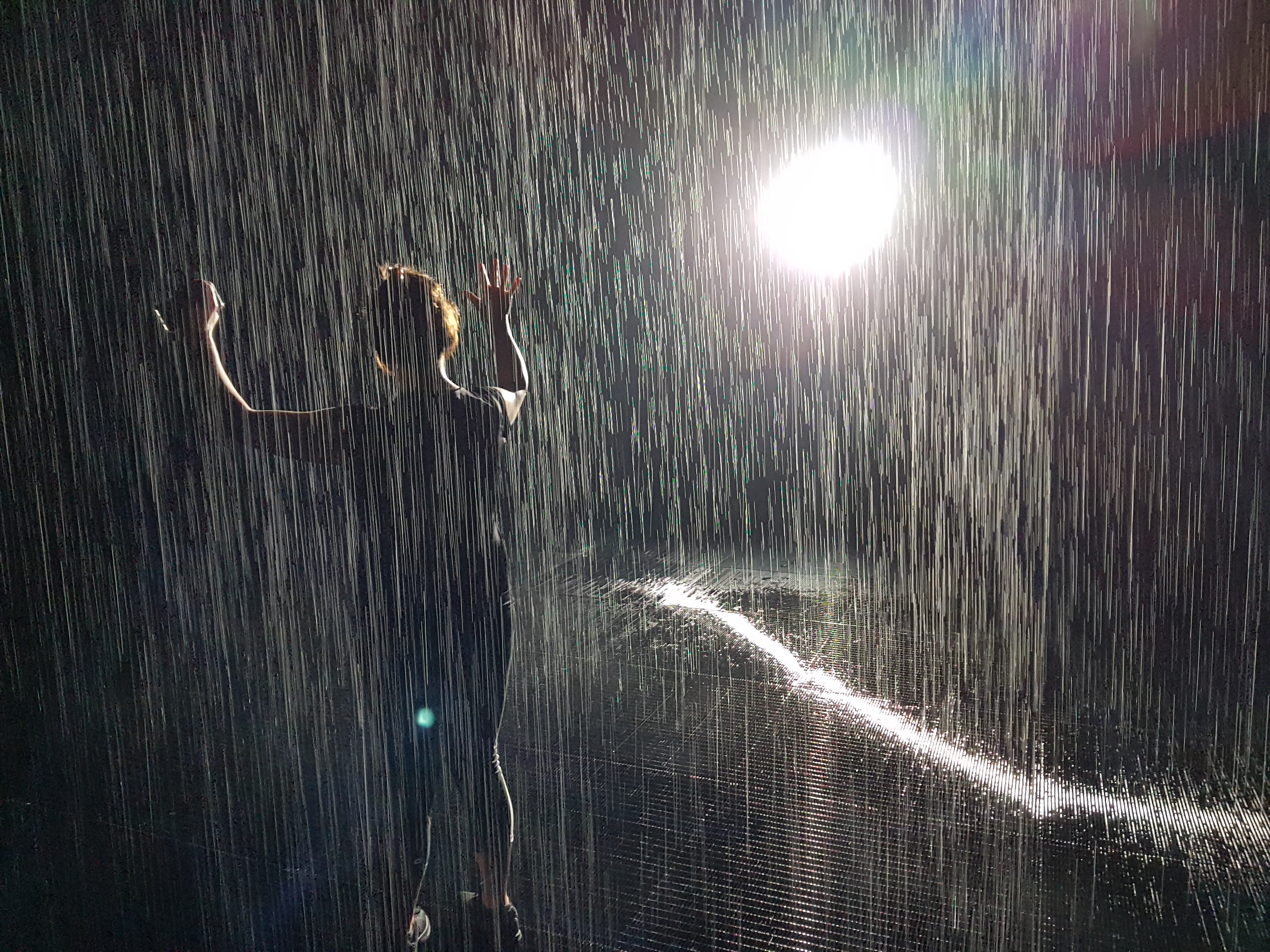|
Tactile Technology
Tactile technology is the integration of multi-sensory triggers within physical objects, allowing "real world" interactions with technology. It is similar to haptic technology, as both focus on touch interactions with technology, but whereas haptic is simulated touch, tactile is physical touch. Rather than using a digital interface to interact with the physical world, as augmented reality does, tactile technology involves a physical interaction that triggers a digital response. Benefits The word "tactile" means "related to the sense of touch" or "that can be perceived by the touch; tangible". Touch is incredibly important to human communication and learning, but increasingly, most of the content people interact with is purely visual. Tactile technology presents a way to use advances in technology and combined with touch. Studies show that humans work and learn better in a multi-sensory environment. Something as simple as having toys (like the fidget spinner) in the workplace, or ... [...More Info...] [...Related Items...] OR: [Wikipedia] [Google] [Baidu] |
Haptic Technology
Haptic technology (also kinaesthetic communication or 3D touch) is technology that can create an experience of touch by applying forces, vibrations, or motions to the user. These technologies can be used to create virtual objects in a computer simulation, to control virtual objects, and to enhance remote control of machines and devices (telerobotics). Haptic devices may incorporate tactile sensors that measure forces exerted by the user on the interface. The word '' haptic'', from the (''haptikos''), means "tactile, pertaining to the sense of touch". Simple haptic devices are common in the form of game controllers, joysticks, and steering wheels. Haptic technology facilitates investigation of how the human sense of touch works by allowing the creation of controlled haptic virtual objects. Vibrations and other tactile cues have also become an integral part of mobile user experience and interface design. Most researchers distinguish three sensory systems related to sense of touch ... [...More Info...] [...Related Items...] OR: [Wikipedia] [Google] [Baidu] |
Lego
Lego (, ; ; stylised as LEGO) is a line of plastic construction toys manufactured by the Lego Group, a privately held company based in Billund, Denmark. Lego consists of variously coloured interlocking plastic bricks made of acrylonitrile butadiene styrene (ABS) that accompany an array of gears, figurines called minifigures, and various other parts. Its pieces can be assembled and connected in many ways to construct objects, including vehicles, buildings, and working robots. Assembled Lego models can be taken apart, and their pieces can be reused to create new constructions. The Lego Group began manufacturing the interlocking toy bricks in 1949. Moulding is done in Denmark, Hungary, Mexico, and China. Brick decorations and packaging are done at plants in the former three countries and in the Czech Republic. Annual production of the bricks averages approximately 36 billion, or about 1140 elements per second. One of Europe's biggest companies, Lego is the largest to ... [...More Info...] [...Related Items...] OR: [Wikipedia] [Google] [Baidu] |
Barbican Centre
The Barbican Centre is a performing arts centre in the Barbican Estate of the City of London, England, and the largest of its kind in Europe. The centre hosts classical and contemporary music concerts, theatre performances, film screenings and art exhibitions. It also houses a library, three restaurants, and a conservatory. The Barbican Centre is a member of the Global Cultural Districts Network. The London Symphony Orchestra and the BBC Symphony Orchestra are based in the centre's Concert Hall. In 2013, it once again became the London-based venue of the Royal Shakespeare Company following the company's departure in 2001. The Barbican Centre is owned, funded, and managed by the City of London Corporation. It was built as the City's gift to the nation at a cost of UK£161 million (equivalent to £ in ), and was officially opened to the public by Queen Elizabeth II on 3 March 1982. Together with the Southbank Centre, a similar arts centre, the Barbican Centre is ... [...More Info...] [...Related Items...] OR: [Wikipedia] [Google] [Baidu] |
Rain Room
''Rain Room'' is a 2012 experiential artwork by Hannes Koch and Florian Ortkrass of Random International, which found its first permanent installation in Sharjah, United Arab Emirates in 2018. The piece had previously shown in a number of international art venues, including New York's Museum of Modern Art (Museum of Modern Art, MoMA) and London's Barbican Centre, Barbican. Description ''Rain Room'' allows visitors to the installation to walk through a downpour without getting wet. Motion sensors detect visitors' movements as they navigate through the darkened space, becoming "performers in this intersection of art, technology and nature". This site-specific sound and light installation uses 2,500 litres of self-cleaning recycled water, controlled through a system of 3D tracking cameras placed around the ceiling. The cameras detect a visitor's movement and signal groups of the water nozzles in the ceiling, stopping the flow of water in a roughly six-foot radius around the person. ... [...More Info...] [...Related Items...] OR: [Wikipedia] [Google] [Baidu] |


